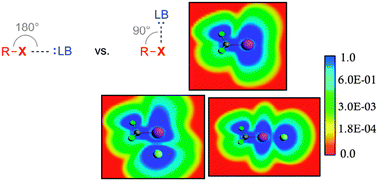On the directionality of halogen bonding†
Abstract
The origin of the high directionality of

* Corresponding authors
a
Department Chemie, Technische Universität München, Lichtenbergstraße 4, D-85747 Garching, Germany
E-mail:
stefan.m.huber@tum.de
Tel: +49 8928914591
b
Department of Chemistry, Ripon College, 300 Seward St., Ripon, WI, USA
E-mail:
scanlonj@ripon.educ
Tel: +1 920-748-8124
c
Kimika Fakultatea, Euskal Herriko Unibertsitatea, UPV/EHU and Donostia International Physics Center (DIPC), PK 1072, 20080, Donostia, Euskadi, Spain
E-mail:
iinfant76@gmail.com
The origin of the high directionality of

 Please wait while we load your content...
Something went wrong. Try again?
Please wait while we load your content...
Something went wrong. Try again?
S. M. Huber, J. D. Scanlon, E. Jimenez-Izal, J. M. Ugalde and I. Infante, Phys. Chem. Chem. Phys., 2013, 15, 10350 DOI: 10.1039/C3CP50892G
To request permission to reproduce material from this article, please go to the Copyright Clearance Center request page.
If you are an author contributing to an RSC publication, you do not need to request permission provided correct acknowledgement is given.
If you are the author of this article, you do not need to request permission to reproduce figures and diagrams provided correct acknowledgement is given. If you want to reproduce the whole article in a third-party publication (excluding your thesis/dissertation for which permission is not required) please go to the Copyright Clearance Center request page.
Read more about how to correctly acknowledge RSC content.
 Fetching data from CrossRef.
Fetching data from CrossRef.
This may take some time to load.
Loading related content
